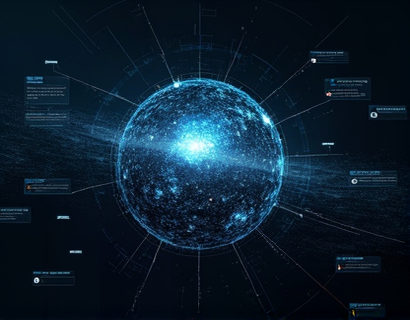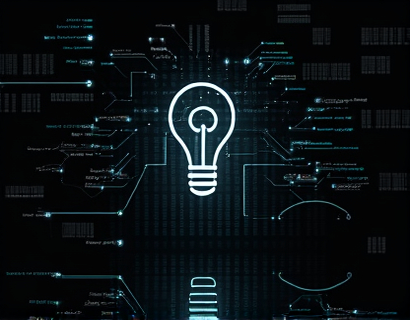Maximize Your Multi-Channel Announcements: A Strategic Guide for Businesses and Individuals
In today's fast-paced digital landscape, effective communication is crucial for businesses and individuals aiming to stand out and connect with their audience. Multi-channel announcements offer a powerful way to reach a broader audience, but managing these announcements across various platforms can be challenging. This comprehensive guide provides expert strategies to streamline your publishing process and enhance message visibility, ensuring maximum reach and engagement. By adopting a user-friendly approach, this guide is tailored for businesses and individuals seeking robust multi-channel solutions to optimize their communication strategy.
Understanding Multi-Channel Communication
Multi-channel communication involves using multiple platforms to disseminate information to your audience. This can include social media, email newsletters, websites, blogs, and more. Each channel has its unique audience and engagement dynamics, making it essential to tailor your messages accordingly. The key to successful multi-channel communication lies in consistency, clarity, and relevance across all platforms. By ensuring your message is cohesive and aligned with your brand's voice, you can build trust and credibility with your audience.
Benefits of Multi-Channel Announcements
Engaging your audience through multiple channels offers several advantages. Firstly, it increases the likelihood of reaching a wider audience, as different people consume information through various platforms. For instance, while some may prefer social media for real-time updates, others might rely on email for detailed information. By using multiple channels, you can cater to these diverse preferences, ensuring no segment of your audience is left behind.
Secondly, multi-channel announcements enhance message visibility and retention. Repeating your message across different platforms reinforces its importance and helps it stick in the minds of your audience. This repetition can lead to higher engagement rates, whether through likes, shares, comments, or direct responses. Additionally, a well-coordinated multi-channel approach can improve your brand's visibility, making it more memorable and recognizable.
Challenges in Multi-Channel Communication
While the benefits are clear, managing multi-channel announcements comes with its own set of challenges. One of the primary issues is the complexity of coordinating messages across multiple platforms. Each platform has its own set of rules, audience behaviors, and optimal posting times. For example, what works on Twitter may not be as effective on LinkedIn. This requires a strategic approach to content creation and scheduling to ensure consistency and relevance.
Another challenge is the resource intensity involved. Creating and publishing content across multiple channels can be time-consuming and labor-intensive. Small businesses and individuals, in particular, may struggle to allocate the necessary resources to manage a multi-channel strategy effectively. This can lead to inconsistent messaging, delayed updates, and a diluted brand presence.
Strategies for Streamlining Multi-Channel Publishing
To overcome these challenges, it's essential to adopt strategies that streamline your multi-channel publishing process. Here are some expert tips to help you manage your announcements more efficiently:
- Centralize Your Content Creation: Use a centralized content management system to create and store your announcements. This ensures that all team members have access to the latest versions and reduces the risk of inconsistent messaging. Tools like Google Drive or Microsoft OneDrive can serve as effective platforms for content storage and collaboration.
- Leverage Scheduling Tools: Utilize scheduling tools to automate the publication of your announcements across different platforms. Tools like Hootsuite, Buffer, or Sprout Social allow you to plan and schedule posts in advance, saving time and ensuring consistent timing. These tools also provide analytics to help you understand which channels and times yield the best engagement.
- Create a Content Calendar: Develop a content calendar to plan and organize your announcements. A calendar helps you visualize your posting schedule, ensuring that you cover all channels and avoid overlaps. It also allows you to align your announcements with key events, promotions, or industry news, maximizing their impact.
- Use Templates and Pre-built Messages: Develop templates for common types of announcements, such as product updates, promotions, or company news. Pre-built messages can be customized with specific details, saving time and maintaining a consistent tone. This approach ensures that your announcements are professional and aligned with your brand's voice.
- Engage in Real-Time Monitoring: Monitor your channels in real-time to respond to comments, messages, and mentions promptly. This not only enhances customer service but also shows that you value your audience's feedback. Tools like TweetDeck for Twitter or the built-in monitoring features of social media platforms can help you stay on top of interactions.
Enhancing Message Visibility
To maximize the visibility of your multi-channel announcements, consider the following strategies:
Firstly, optimize your content for each platform. This includes using platform-specific formats, such as videos for YouTube or infographics for Pinterest, and adhering to character limits and best practices. For example, Twitter's 280-character limit requires concise and impactful messages, while LinkedIn allows for more detailed posts.
Secondly, utilize cross-promotion to drive traffic between channels. For instance, include links to your blog posts in your social media posts and vice versa. This not only increases the reach of your content but also encourages audience engagement across multiple platforms. Additionally, consider running promotions or contests that require participation from multiple channels, creating a cohesive and engaging experience for your audience.
Thirdly, personalize your messages where possible. While automation tools can save time, personal touches can significantly enhance engagement. Address your audience by name, reference their previous interactions, and tailor content to their interests. Personalization can make your announcements feel more relevant and valuable, leading to higher engagement rates.
Measuring Success in Multi-Channel Communication
To ensure your multi-channel announcements are effective, it's crucial to measure their performance regularly. Here are key metrics to track and analyze:
- Engagement Rates: Monitor likes, shares, comments, and other interactions to gauge how well your content resonates with your audience. High engagement rates indicate that your messages are relevant and engaging.
- Reach and Impressions: Track the number of unique users who see your announcements and the total number of times they are displayed. This helps you understand the overall visibility of your content.
- Click-Through Rates (CTR): For announcements that include links, monitor the percentage of users who click through to your website or landing page. A higher CTR suggests that your content is compelling and relevant.
- Conversion Rates: If your announcements aim to drive specific actions, such as purchases or sign-ups, track the number of conversions resulting from your multi-channel efforts. This provides a clear measure of the impact of your communication strategy.
Using analytics tools provided by each platform or third-party solutions like Google Analytics can help you collect and analyze these metrics. Regularly reviewing and adjusting your strategy based on data insights will ensure continuous improvement and better results.
Conclusion
Maximizing your multi-channel announcements requires a strategic and well-coordinated approach. By centralizing content creation, leveraging scheduling tools, creating a content calendar, using templates, and monitoring interactions, you can streamline your communication process and enhance message visibility. Optimizing content for each platform, cross-promoting, personalizing messages, and measuring performance are additional steps to ensure your announcements reach and engage your audience effectively. With these strategies, businesses and individuals can connect more meaningfully with their audience, build a strong brand presence, and achieve their communication goals.










































